For those who have never been there, Western Sichuan is a dreamy dream, full of mystery, which makes people feel curious.
For those who have been there, Western Sichuan is a permanent concern. Where is the beauty of Western Sichuan?
Let’s go and see together.
1. Three-dimensional oil painting – Batang Cuopugou
Cuopugou Natural Ecological Reserve is located in Chaluo Township in the north of Batang County, Ganzi. National Highway 318 passes through the mouth of the ditch, 105 kilometers away from Batang County and 105 kilometers away from Litang County.

Snow mountains, lakes, forests, canyons, meadows, springs, wild animals, Tibetan Buddhist temples, and cultural landscapes constitute the unique beauty here.

The Cuopu Lake in the ditch is located between the Hengduan Mountains and the Shaluli Mountains. It is the most beautiful of the many lakes in the Cuopu Valley, and it is also a holy lake revered by Tibetans.

2. White pearls sprinkled in the world——Xiangcheng Baizangfang
Xiangcheng Baizangfang is located in Xiaba Village, Qingde Township, Litang County, Ganzi. Exit Chengdu and take Chengya Expressway to Ya’an, turn to G318 National Highway and go straight to Litang, then turn left to S217 Provincial Highway and go straight, pass Xiangcheng County and continue for about 13 kilometers to arrive.
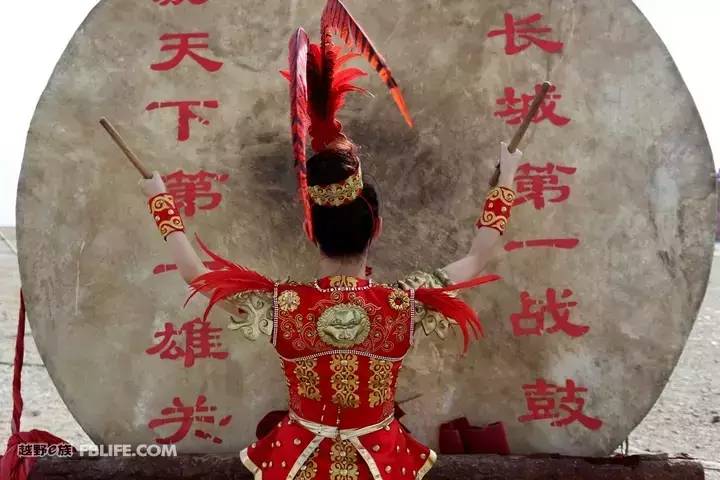
This place has been blended with multiple cultures since ancient times. On the basis of Kham-Tibetan architecture, the local residents finally integrated the well-dried structure, the shape of the watchtower, and the technique of earth-building walls to create a white Tibetan house in the township—a fusion of the three major ethnic groups of Tibetan, Han, and Naxi. A building of style and artistic aesthetic.

The lofty mountains and Pingba grasslands of the Western Sichuan Plateau bring together a grand view of Tibetan residential buildings, ranging from the most elegant and exquisite to the most simple and simple. However, apart from Xiangcheng, you can’t find a second gathering place of white Tibetan houses.

The L-shaped white Tibetan houses one by one are located in the verdant barley fields, which are more elegant and beautiful. White pearls are sprinkled on the world, which is a unique scenery in the countryside.

3. The immortal dwelling where the rainbow resides – Daofu Secret Realm
Daofu County belongs to the northeastern part of Ganzi Prefecture in Sichuan Province. It is extremely rich in tourism resources and highly primitive. It is a piece of pure land on the Qinghai-Tibet Plateau.

Under the blue sky and white clouds, white walls, mahogany, painted window frames. Stepping into the room, the interior of carved beams and painted buildings is even more jaw-dropping. Such colorful colors, strong contrast but harmonious. Daofu people live in their homes with a rainbow, which is really a fairy-like residence.

I’ve always heard people talk about Daofu. This year, I finally came to this remote “Maju” county, and I was able to have a glimpse of this lotus-like pure place. It is reasonable that he is not far from Danba and Tagong, but the folk customs are really simple, and there is a natural beauty that no boudoir knows. Compared with Xinduqiao and Tagong, which are crowded with tourists, this place is obviously much quieter.

4. The place of the gods – Daocheng Sanshen Mountain
Daocheng Sanshen Mountain is located in Yading Scenic Area, Litang County, Ganzi. Legend has it that in the 8th century A.D., Master Rinpoche consecrated him and named and blessed the three peaks with the three-in-one Bodhisattva—Guanyin, Manjushri, and Vajrapani—who exorcising demons and demons.
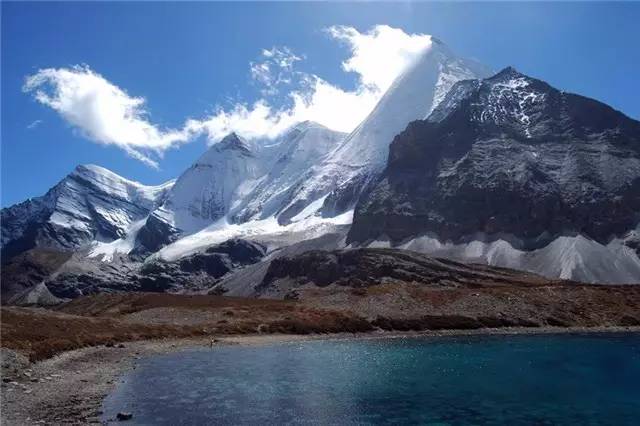
Beifeng Xiannairi, which means Avalokitesvara Bodhisattva, is 6032 meters above sea level, resembling a Bodhisattva sitting on a lotus platform.
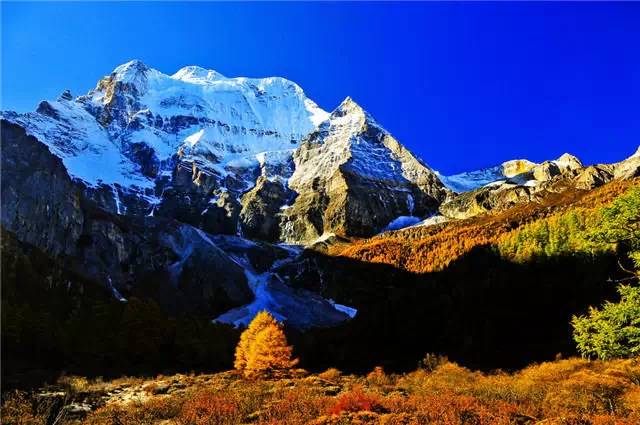
Nanfeng Yangmaiyong, which means Manjusri Bodhisattva, is 5958 meters above sea level and looks like a girl.
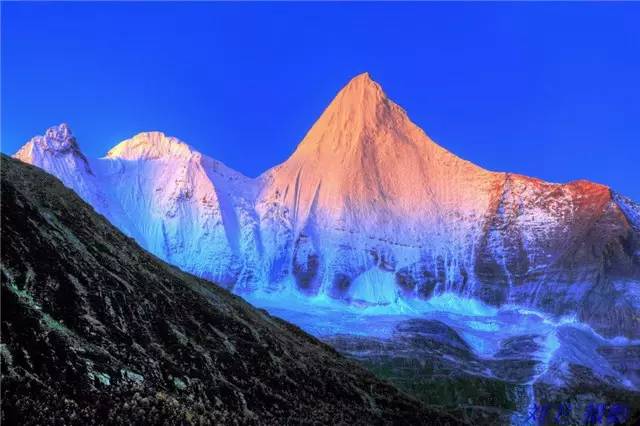
Dongfeng Xialangduoji, which means Vajrapani Bodhisattva, is handsome and strong.
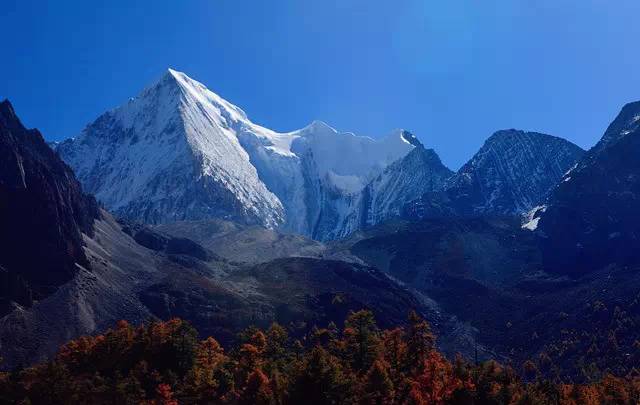
There are many peaks around the sacred mountain, and more than 30 snow-capped peaks surround this “sacred place where all living beings worship gods and accumulate virtue”. The blue sky is like washing, and the clouds on the top of the snow-capped mountains are rolling and relaxing. In the famous snow-covered holy land in Tibetan areas, a huge faith mandala is transforming the secular soul.
5. The best viewing platform of “King of Shu Mountain” – Mount Gaoersi
Gaoersi Mountain is one of the scenic spots on National Highway 318, with an altitude of 4659 meters. It is located between Xindu Bridge and Yajiang River. .

The vast plateau, the light blue sky, the deep blue sky, white clouds sometimes accumulate on the top of the mountain, and sometimes flow in the sky, surrounded by snow lotus, flying like a khata.
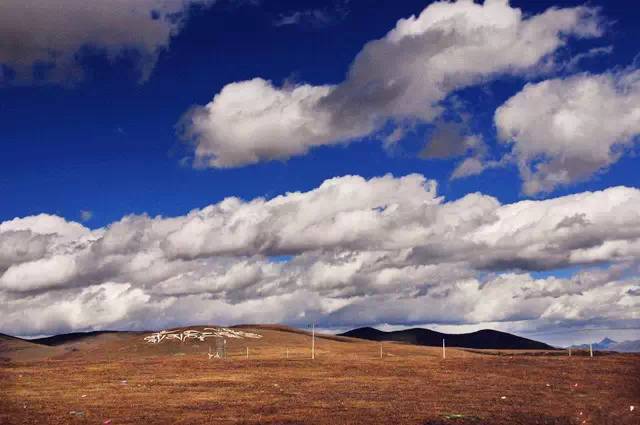
When the sun came out, the Gongga mountain peak shone with a holy silver light, surrounded by mountains, like a green pedestal, holding up a transparent diamond.
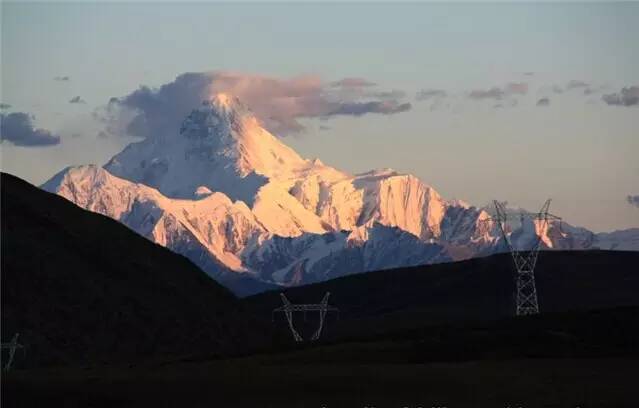
6. Alpine Glass World——Hailuogou
Hailuogou is located in the southeast of Ganzi Tibetan Autonomous Prefecture, Sichuan Province, on the eastern slope of Gongga Mountain, and is an extremely high mountain on the eastern edge of the Qinghai-Tibet Plateau. Pass the Erlangshan Tunnel along the G318 National Highway and turn to the S211 Provincial Highway in Gangudi. After passing Moxi Town, you can see the gate of Hailuogou Scenic Area.
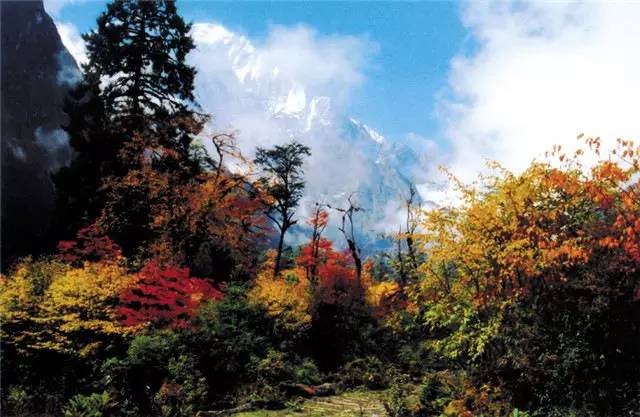
Hailuogou is undoubtedly the “eldest son” of Gongga, the “King of Shu Mountains”. It spans middle, high, and extremely high mountains, and the vertical natural band spectrum based on the subtropical zone makes the biodiversity here amazing.
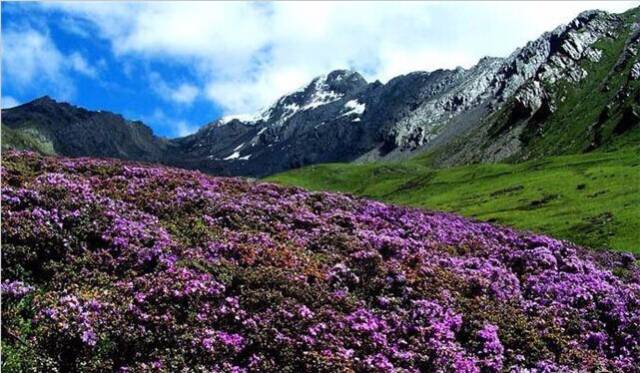
In this high mountain and deep valley with the most preserved ancient and primitive biological species in China, there are more than 2,500 species of plants represented by rhododendron, magnolia, and gentian, and more than 400 species of animals represented by snow leopard and blue sheep.
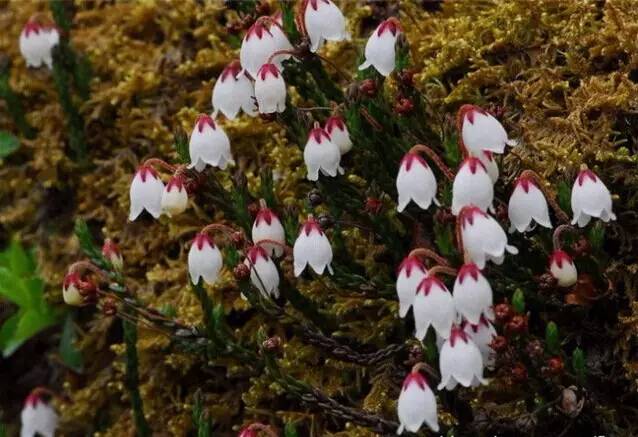
Here is simply a glacier museum: ice-eroded valleys, hanging valleys, valleys in the valley, horn peaks, knife ridges, ice ridges, ice cirques, snow basins, polished surfaces, notches, grooves…these have carved Hailuogou into The fantastic alpine glass world.
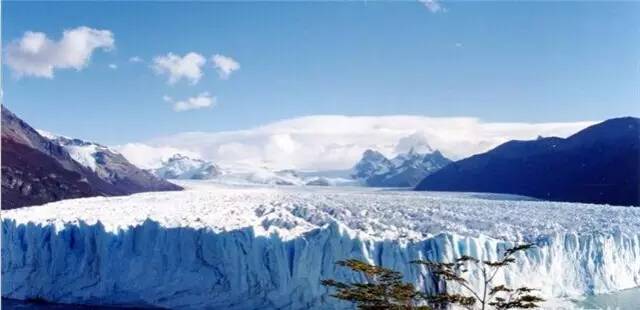
7. Teardrops Turned into Compassion – Haizishan Sister Lake
Haizishan Sister Lake is a dazzling pearl on the Sichuan-Tibet line. Haizishan Nature Reserve is located in the middle of Batang and Litang. It is the largest ancient glacier relic on the Qinghai-Tibet Plateau.
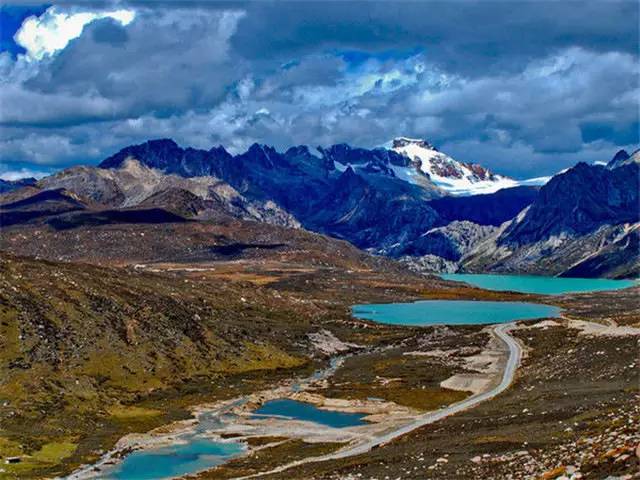
There are more than 1,000 “Haizi”, large and small, on the whole mountain. The “Sister Lake” (also called “Glass Lake”) lies quietly on Haizi Mountain, looking so holy like two beautiful and shy girls waiting to be married.
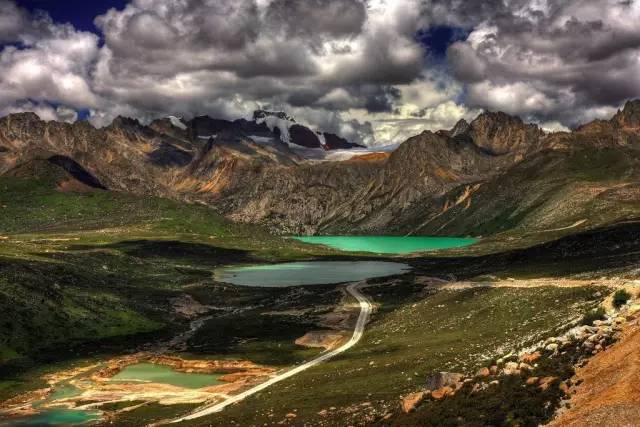
Surrounded by snow-capped peaks, she is like two bright pearls and two tears of snow-capped mountains, shedding at the foot of the mountain. This kind of sacred quiet beauty will make you remember for a lifetime.
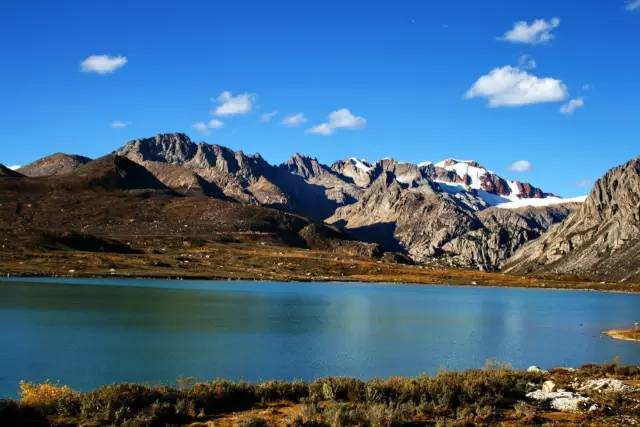
8. The hidden alpine wetland – Lotus Sea Moon Bay
Lotus Sea National Forest Park is located in the Kuxirong Valley at an altitude of 3,000 meters in Pusharong Township, Kangding County, Sichuan Province, between Gongga Mountain and Wuxuhai Scenic Area.

It is named for the lotus that grows in the “sea”, also known as Hehe Haizi. It is a freshwater alpine lake surrounded by grasslands, forests, and snow-capped mountains. It is picturesque.

Standing by the lake, the lake surface is as horizontal as a mirror, and the lake water is clear and transparent. Under the sunlight, it presents yellow, green, blue and other colors, like a huge colored silk inlaid on the mountain.
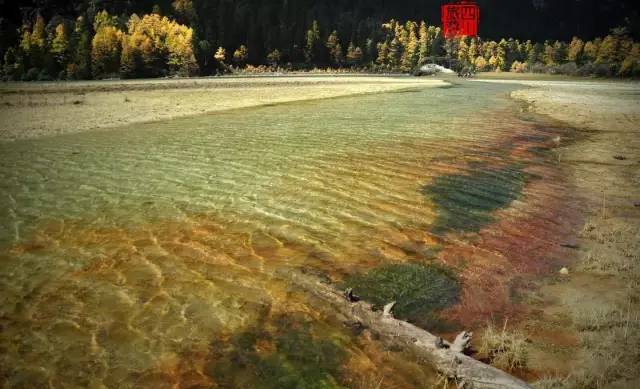
9. The essence of Jiarong Tibetan style – Jiaju Tibetan Village
Jiaju Tibetan Village is located in Danba County, Ganzi Prefecture, Sichuan Province, about 8 kilometers away from the county seat. It is the most distinctive tourist attraction in Danba.
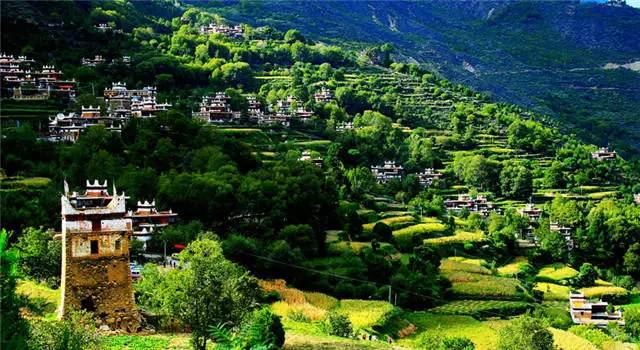
The Tibetan village climbs up from the Dajin River Valley to the foot of the Kapama peaks. The whole village follows the undulating mountains. On the hillside with a relative height difference of nearly a thousand meters, Tibetan-style buildings are scattered on Among the green trees.
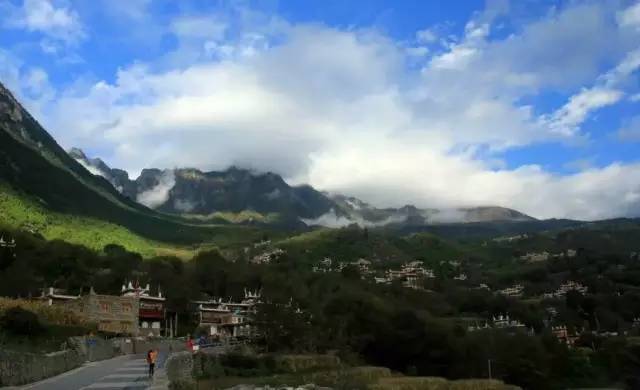
It is dotted with stars, or densely packed, or on the cliffs of high mountains, or among the greenery of river dams. From time to time, there are smoke and clouds from cooking, and together with aura-filled valleys, clear streams, and snow-capped peaks, they are rated as “the most beautiful in China”. The first of the six ancient villages and towns.
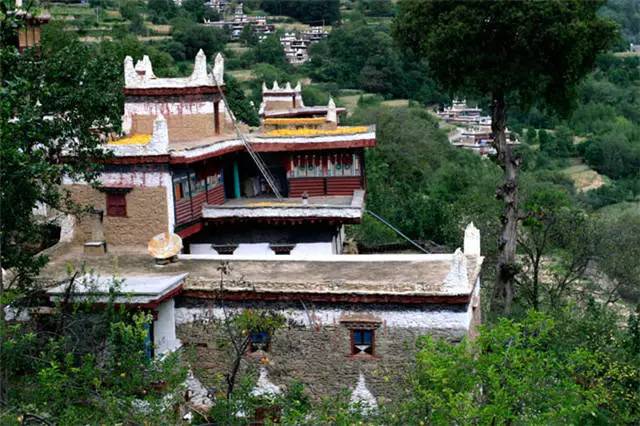
10. There are houses in the depths of the canyon—Riwa village houses
Derong Tibetan means “the land of canyons”. In the land of less than 3000 square kilometers in Derong, there are many rivers and canyons such as Jinsha River, Dingqu River, Shuoqu River and Gangqu River. It has its magnificent and unique natural scenery.
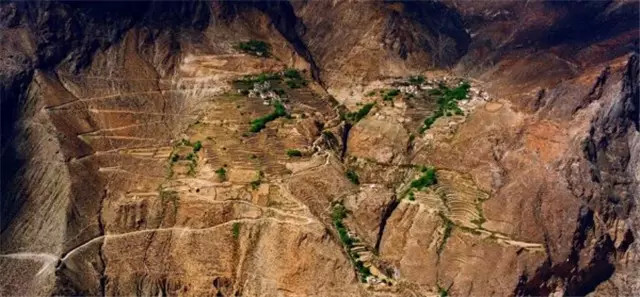
In the hot and dry valleys of Derong, many Tibetan villages are built along the mountains and distributed along the canyons, the most unique of which is Riwa Village, an ancient school township. Standing in Xiayong Village opposite it, you can take a panoramic view of Riwa Village.
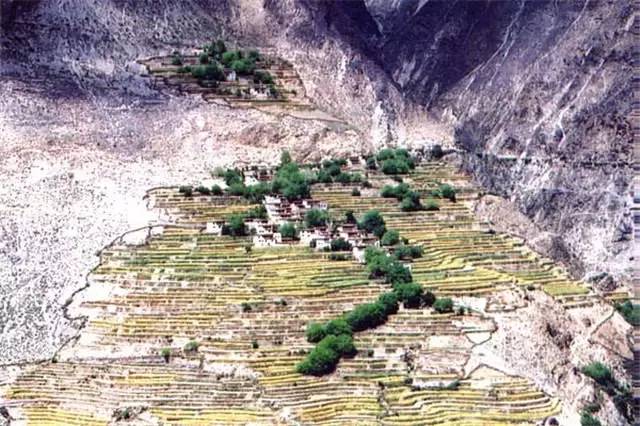
11. King Gesar’s soul-sending city—Songamani City
In the hinterland of the Zhaxika Grassland in Shiqu County, Sichuan Province, there is a thousand-year-old stone city-Songamani City. The reason why it is called Shenzang is that it is still very primitive. This kind of road leads to here, and there is no signpost along the way.
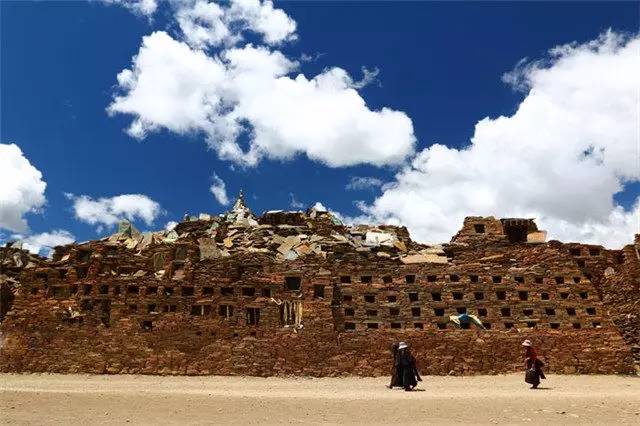
In the distant Gesar period, in order to commemorate the soldiers who died in the battle, King Gesar threw the first stone here, and the soldiers also dropped stones one by one to build up this mani pile, which is a memorial to the heroes. Pray for salvation for the dead.
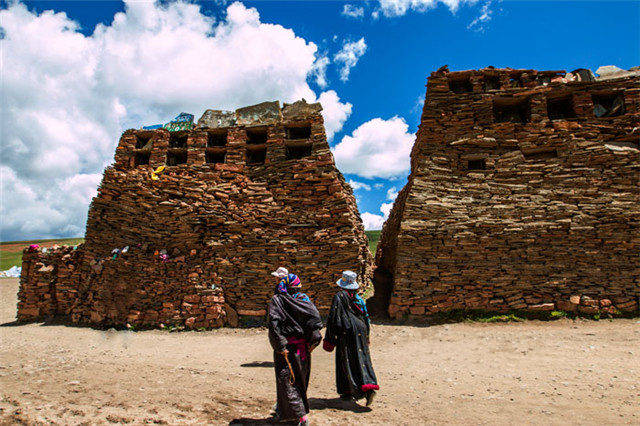
Later, in memory of King Gesar, the common people continued to come here for pilgrimage, and the Mani pile became bigger and bigger. After a long time, the current Mani City was formed.
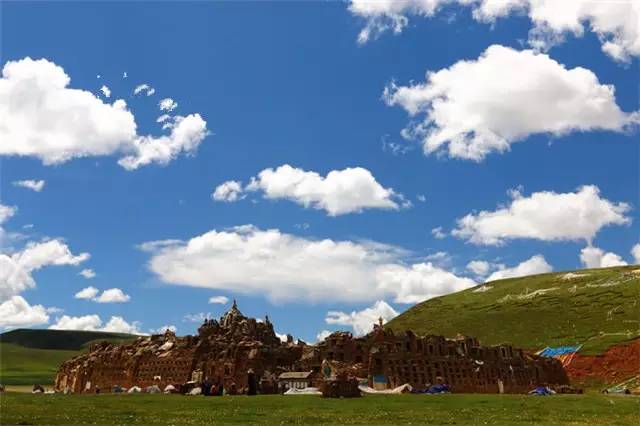
12. The extraordinary secret place where the three realms unite – Tagong Grassland
Tagong Grassland Scenic Area is located in Tagong Township, Kangding County, Ganzi Tibetan Autonomous Prefecture, Sichuan, 113 kilometers northwest of Kangding City, on a plateau at an altitude of 3,730 meters, and the Sichuan-Tibet Highway passes through it.
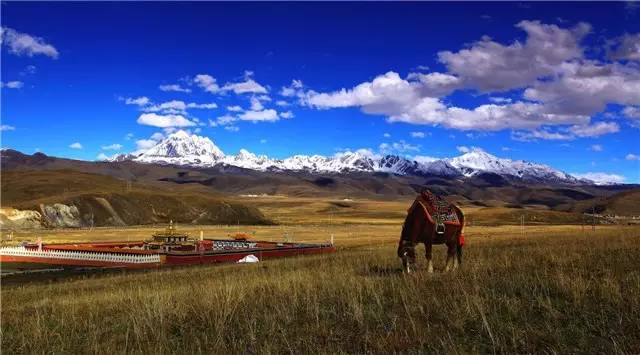
The transportation is convenient, and it is the most famous grassland in Ganzi Prefecture. It travels westward along the Sichuan-Tibet line from Kangding, crosses Zheduo Mountains, and travels northward for 37.3 kilometers to Tagong Temple after Xindu Bridge.
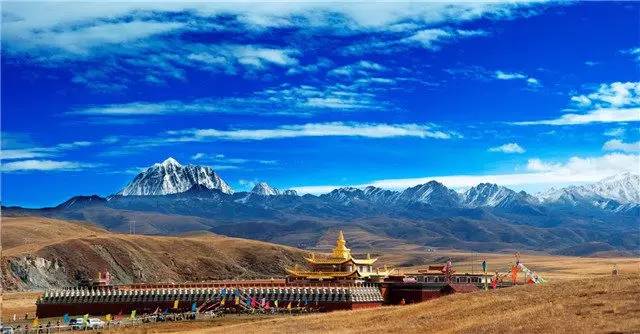
The rivers, grasslands, forests, mountains, temples, Tibetan buildings and strong Tibetan customs along the line constitute the scenic spot.
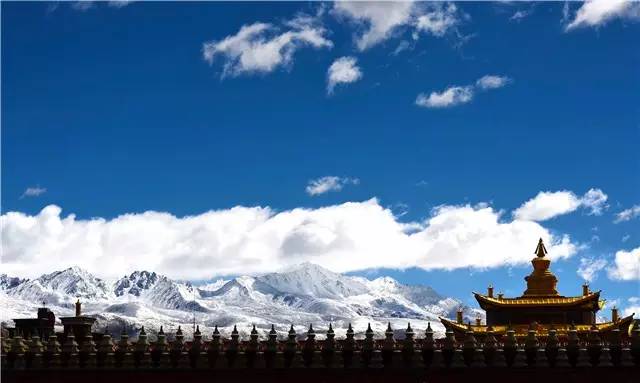
13. The sacred lake that Princess Gesar loves—Xinluhai
Xinluhai is located at the foot of Queer Mountain in Dege County, on the side of the Sichuan-Tibet Highway, 98 kilometers away from Ganzi County. It is a famous ice-eroded lake in Ganzi Prefecture. The water source is supplied by the glaciers and snow melting of Queer Mountain, and the stream flowing out of the end of the lake is one of the sources of the Cuoqu River.
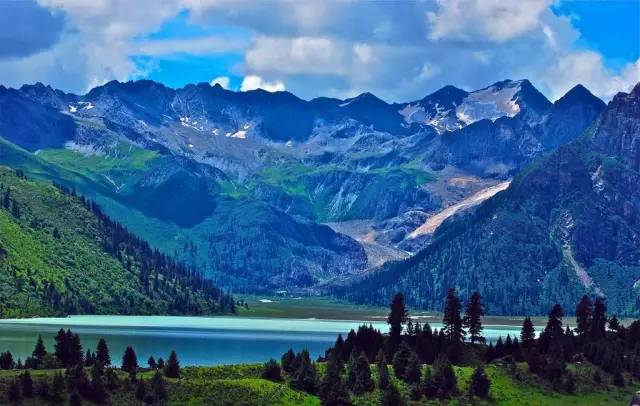
Xinluhai is named Yulong Lacuo in Tibetan, “Jade is the heart, the dragon is Qing, and Lacuo is the lake of the gods.
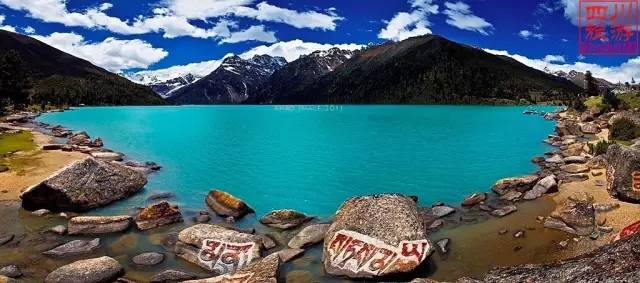
According to legend, the hero Gesar’s concubine Zhumu in the famous Tibetan epic “The Legend of King Gesar” came to the lake, was attracted by the beautiful lake and mountains and the quiet environment, and wandered around the lake, forgetting to return. Her nostalgia is beautiful. He Shan’s heart still sank to the bottom of the sea.
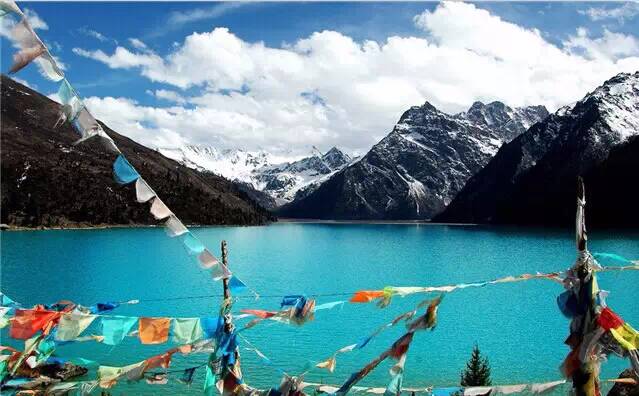
14. Habitat of Gongga Natural Elves – Yajiageng Red Rock Beach
Yajiageng is located in the Hailuogou Scenic Area of Gongga Mountain, between Laoyulin in Kangding and Moxi Town in Hailuogou. The red stone beach at the mouth of Yajiageng is one of the largest red stone beaches in the world. .

The rust-red substance growing on the stone is a very rare type of algae (complex of lichens). This kind of plant will naturally grow on the surface of the rock when the humidity, temperature, and climate are suitable for about four to five years. Then it dies and then regenerates.
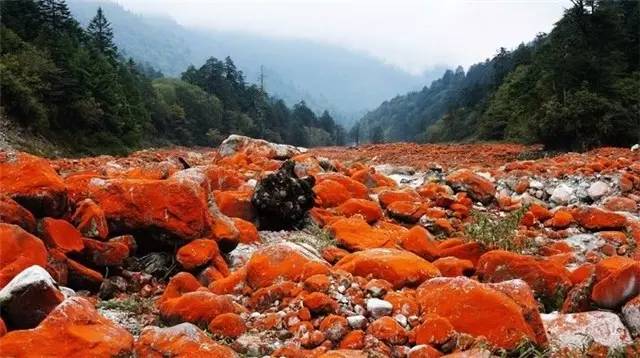
The red stones here have a large area and bright red color, stretching along the valley endlessly, with a magnificent momentum.
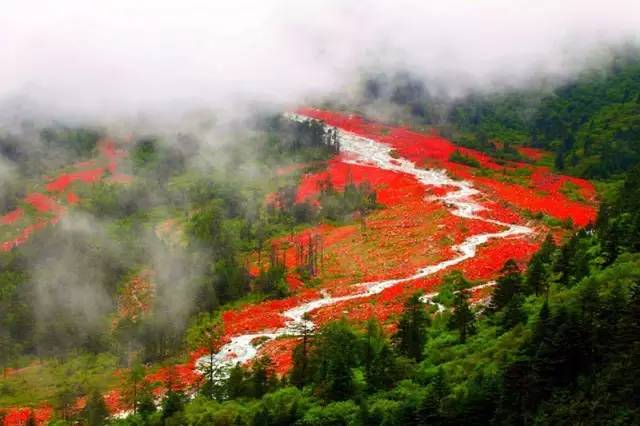
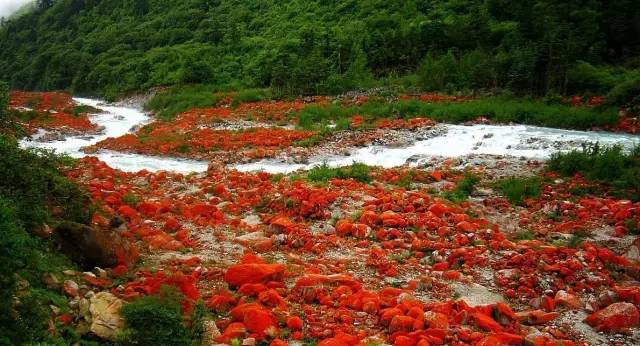
15. The country of thousands of blockhouses – Zhonglu Tibetan Village
Zhonglu Tibetan Village is located in the northeast of Danba County, Ganzi Prefecture, Sichuan Province, with an altitude of 2,100 meters and a total of more than 3,600 people. The white Tibetan houses and golden-roofed temples are faintly visible under the blue sky, colorful but without any sense of disorder.
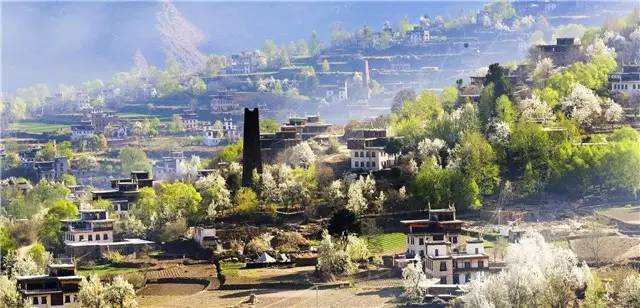
The ancient watchtowers with a long history in Zhonglu Tibetan Village, the simple and solemn coming-of-age ceremony, various forms of Guozhuang dance, solemn and solemn ancient Tibetan opera, gorgeous and gorgeous Jiarong Tibetan clothes, witty and witty custom of topping shirts, steaming butter tea, crispy and delicious The fire steamed buns, all of which are so lively and fragrant.
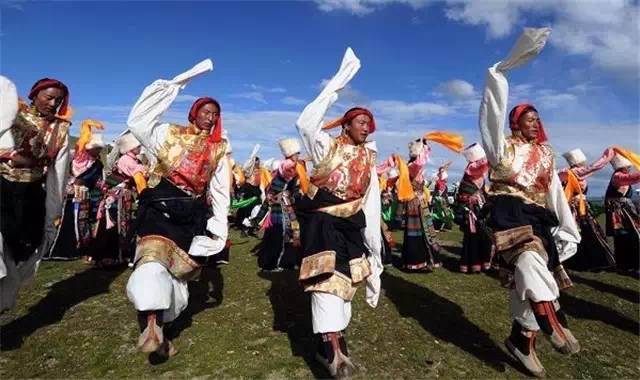
People in Zhonglu who respect heaven and fear God are devout believers of Tibetan Buddhism, and nature worship and totem worship can be seen everywhere. I searched for her thousands of times in my dream, but I was at a loss when I was in Taoyuan.
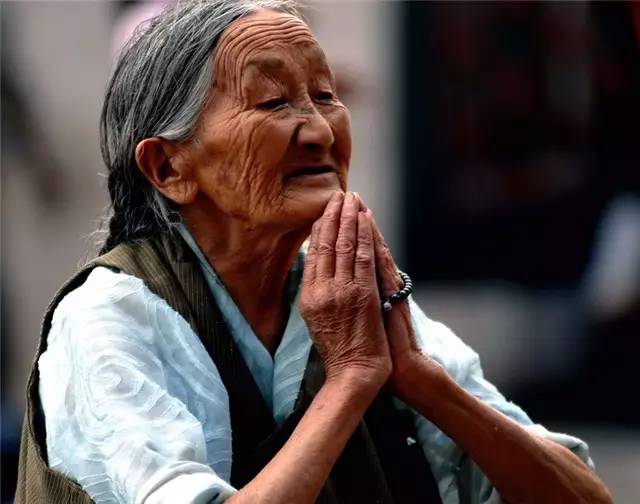
16. A Beautiful Encounter——Aba Morning Mist
Aba Tibetan and Qiang Autonomous Prefecture, referred to as Aba Prefecture, is an autonomous prefecture in Sichuan Province, with ethnic minorities as the main population. It is located in the northwest of Sichuan, at the junction of Qinghai and Gansu. The entire autonomous prefecture is dominated by high-altitude mountainous areas.

Aba Prefecture is the second largest Tibetan area in Sichuan Province and the main inhabited area of the Qiang people in China.
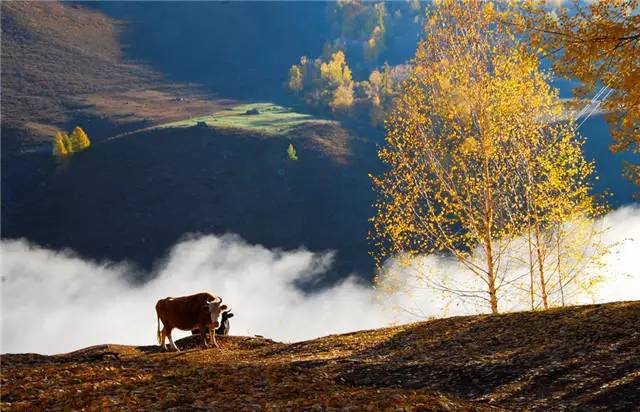
Aba Prefecture is praised by world tourism experts as the best destination for ecotourism in the world.
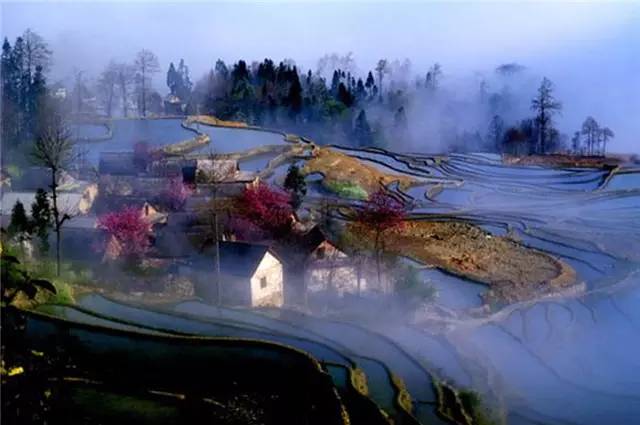
17. Concentrating the essence of plateaus, wetlands and canyons – Bipenggou
Bipenggou is located in Sologou, Putou Township, Li County, Aba Tibetan and Qiang Autonomous Prefecture, Sichuan Province. It is a very well-known holy place for viewing red leaves in China. Bipenggou is famous for its beautiful natural scenery, perfect natural ecological landscape and excellent ecological environment.
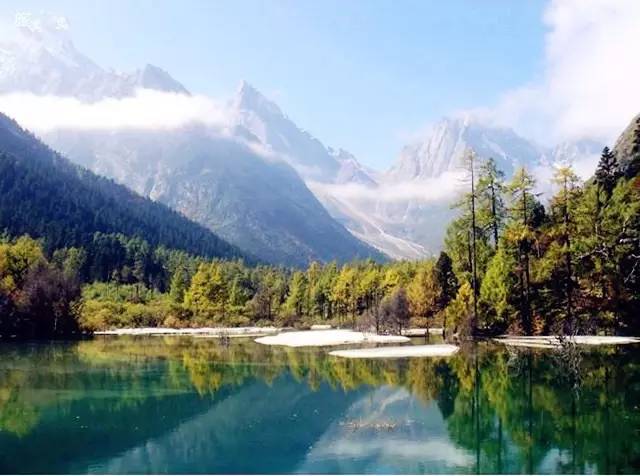
There are many kinds of red leaves and rhododendrons in the scenic area, with primitive forests, flying waterfalls and strange glaciers. Bipenggou is compared to the beautiful back of Mount Siguniang.
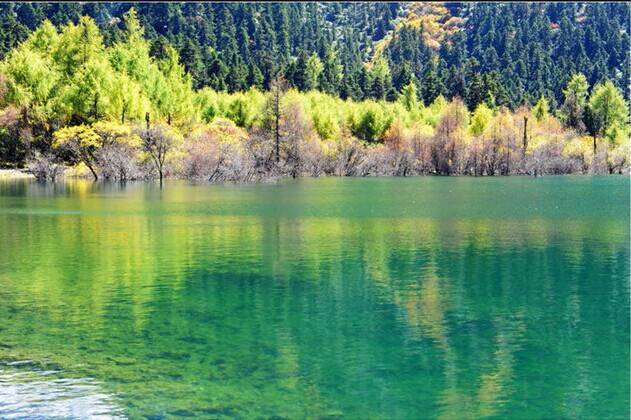
This is a colorful world, with dark green trees, deep red leaves, green lakes, blue sky, and pure white snow; this is a colorful world, with steep and strange peaks, a glacier, and temples on earth.
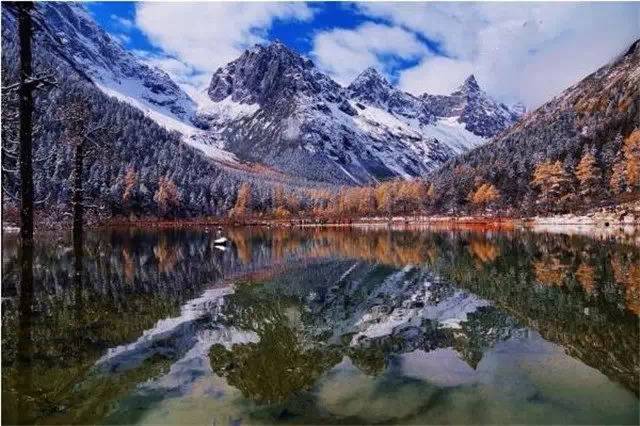
18. The most beautiful “snake song” in Sichuan – the first bay of the Yellow River Jiuqu
The First Bend of the Jiuqu Yellow River is located in Tangke Township, Zoige County, at the junction of Sichuan, Qinghai and Gansu provinces.
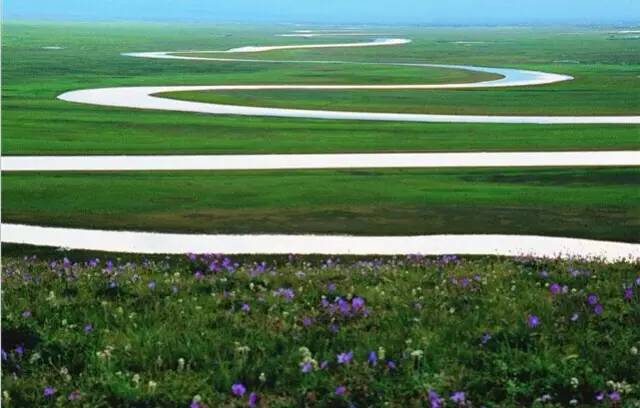
Drive about 61 kilometers from Ruoergai, passing through Tangke Township. The hillside behind Suokezang Temple in Tangke Township is the high point for riding a horse to watch the first bay.
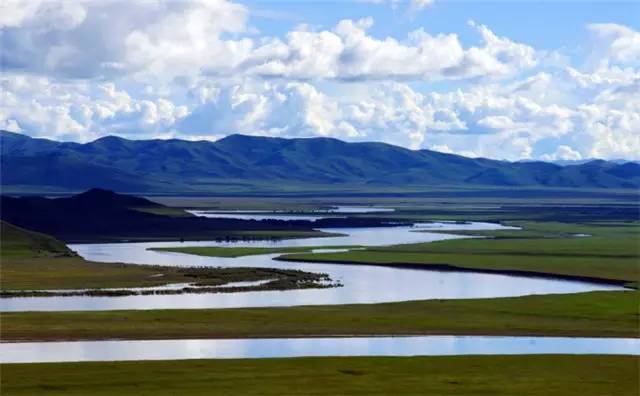
The Yellow River comes from the Gansu side, and the Baihe River flows in from the top of the first bay of the Yellow River, which is shaped like an “S”. The water of the Yellow River is like a fairy ribbon slowly floating from the sky, caressing the edge of Sichuan and then turning around Floating back to Qinghai, so this place is called the first bend of the Jiuqu Yellow River.
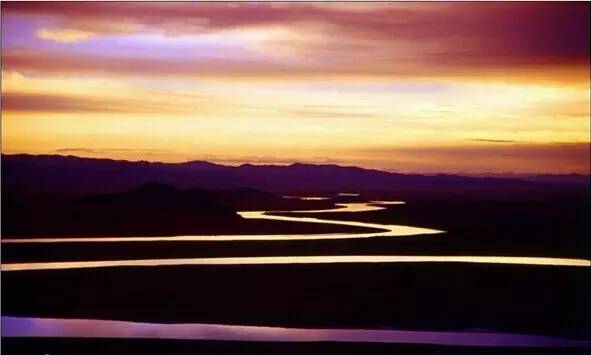
19. Aba’s Jiangnan Style——Jinchuan River Valley
Jinchuan County, known as “Little Jiangnan in Aba Prefecture”, is located in the transition zone between the Hengduan Mountains and the Sichuan Basin. It is the largest pear planting area in the world with original ecology and high altitude.
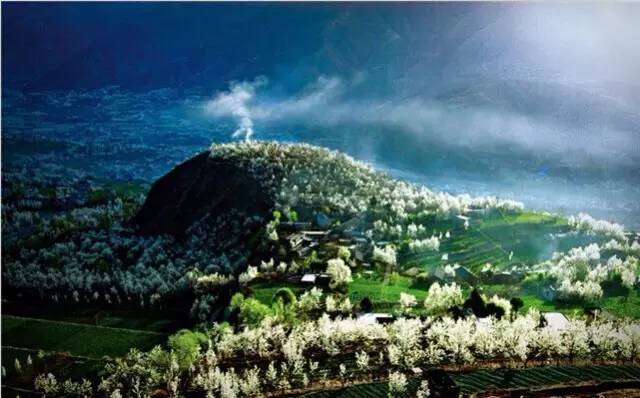
Since the end of Ming Dynasty and the beginning of Qing Dynasty, Jiarong Tibetans have widely planted pear trees with high cold resistance and medicinal functions here.
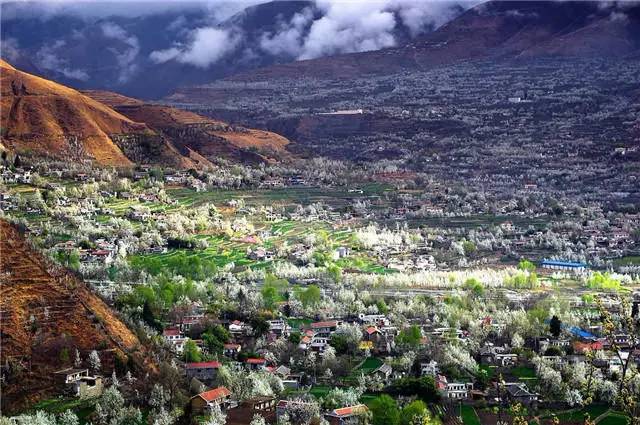
After hundreds of years of continuous growth and cultivation, the Sydney pear planting area in Jinchuan stretches for more than 100 miles along the Dadu River, and the number of pears has reached more than 100,000, which is spectacular.
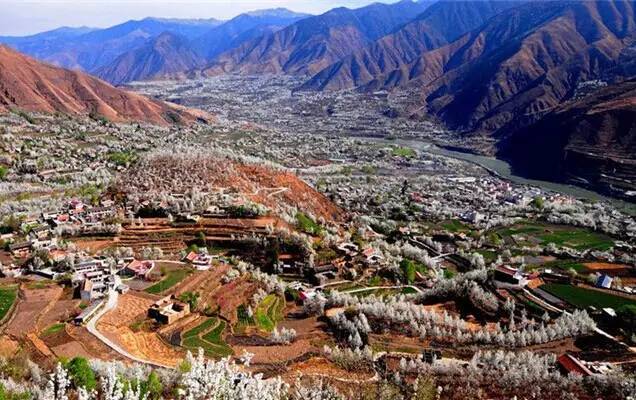
20. A place where even deer can’t run out—Ger Dam
In Tibetan, Gemotuo means a place that is as flat as a door panel and so vast that deer cannot escape. It is 17 kilometers away from Ruoergai County.
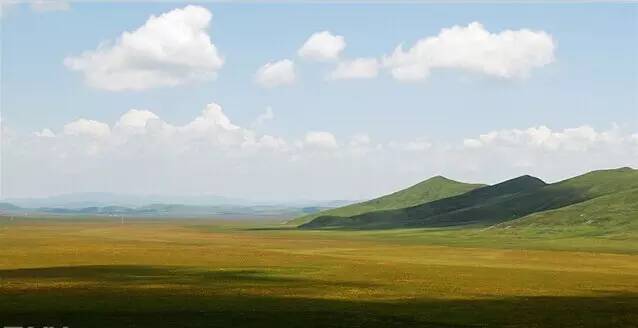
Caotan flower sea is 3.2 million mu, and there are 3 natural lakes in it. Yellow ducks, black-necked cranes, and fish gulls inhabit the lakeside in groups; marmots, hares, and hawks walk through it.
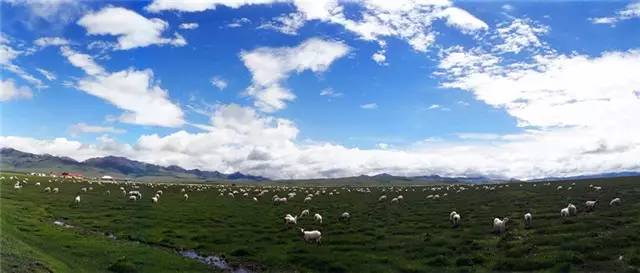
In summer, yaks and sheep are nomadic, tents are dotted, and the green is boundless, which is breathtaking. Reer Dam is the most flat and vast wetland grassland in China.

21. Scattered flowers gradually become charming eyes – Ruoergai Flower Lake
Huahu Lake is located next to National Highway 213 between Ruoergai and Langmusi in Gansu. There are 3 adjacent lakes on the Reer Dam, the smallest is called Cuoergan, the largest is called Cuoreha, and Huahu Lake is the middle one.
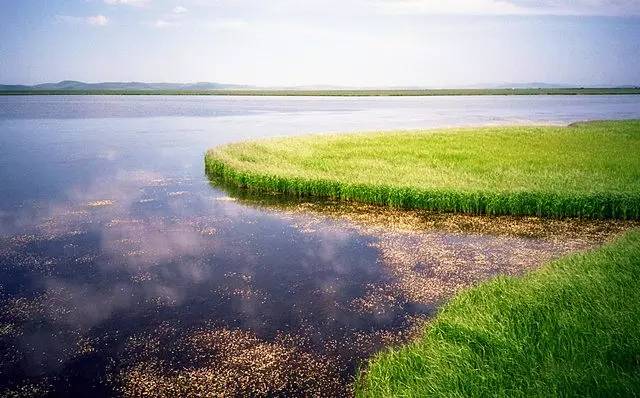
Simple, quiet, but burning, this is the flower lake, the enchanting flower lake. The field is full of green grass, clusters of wild flowers, colorful, and cattle and sheep everywhere are like pearls scattered on the grassland.
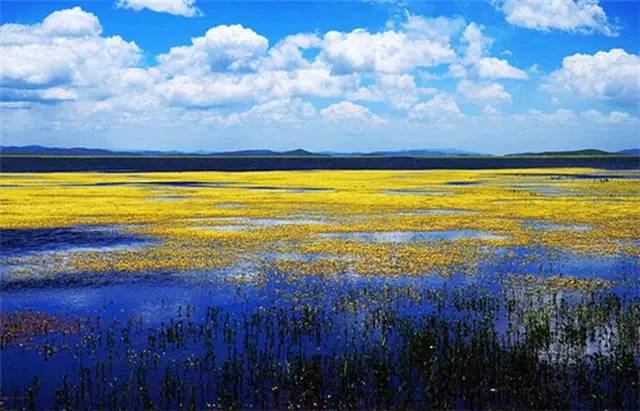
Ruoergai is like a magnificent emerald inlaid on the border of northwestern Sichuan. It is one of the three major wetlands in my country. Haoyuan Fertile Field, vast and boundless, is the flattest wetland grassland in China, and it is also the largest black-necked crane reserve in the country.
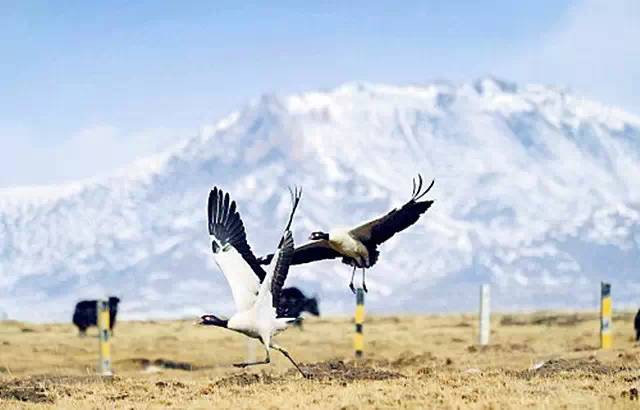
22. Sleeping Holy Land——San’ao Snow Mountain
San’ao Snow Mountain, with its main peak at an altitude of 5,285 meters, is located at the eastern foot of the Qinghai-Tibet Plateau in China, in Heishui County, Aba Tibetan and Qiang Autonomous Prefecture, Sichuan Province, 16 kilometers away from Luhua Town, Heishui County, and 310 kilometers away from Chengdu.
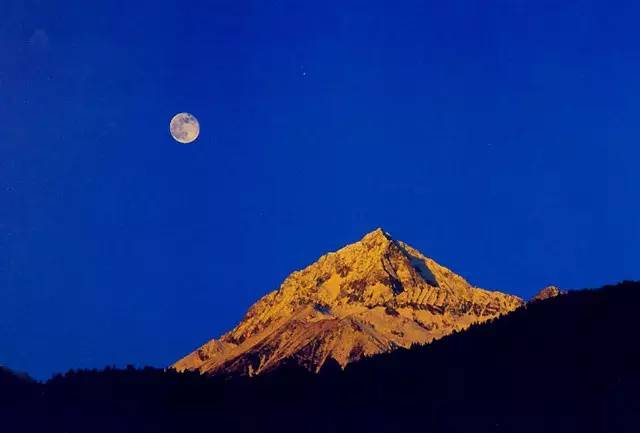
The main peaks, Aotaiji (Tibetan meaning the father of the mountains), Aotaimei (the mother of the mountains), and Aotaina (the son of the mountains), are connected side by side in the shape of “pin”, and the name “Three Ao” comes from this. Come, also known as Aotai Snow Mountain.

Under the sunshine, the three snow-capped mountains are golden yellow, which is even more mysterious and brilliant. You can admire their majestic, beautiful and magnificent figures from anywhere in the county.
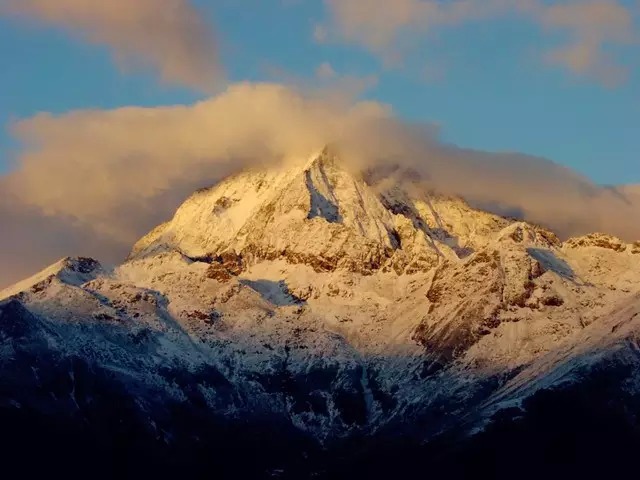
23. Queen of Shu Mountain——Siguniang Mountain
Mount Siguniang is located at the junction of Xiaojin County and Wenchuan County, Aba Tibetan and Qiang Autonomous Prefecture, Sichuan Province. It is located in the middle of the Qionglai Mountains. The mountain range consists of four continuous peaks.
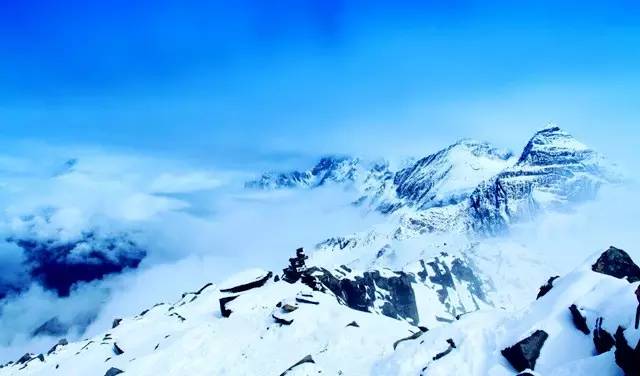
The four mountain peaks are covered with ice and snow all the year round, like four pretty girls with white veils on their heads, standing on the two galaxies of Changpinggou and Haizigou in turn, among which the tallest and most beautiful snow peak is Yaomei “Four Girls”.
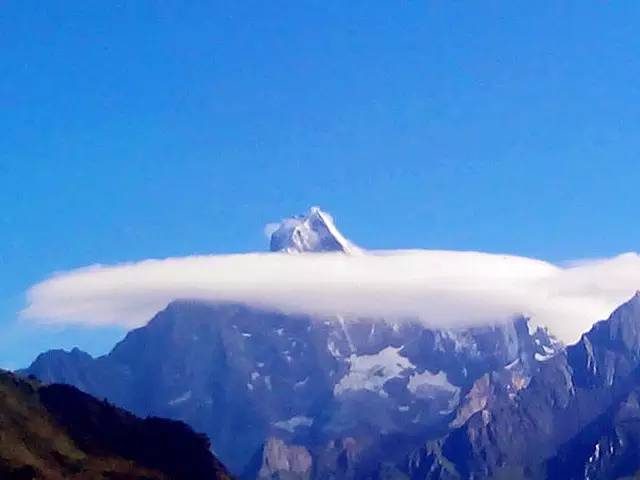
In the west of Sichuan, where the mountains are like clouds, Mount Siguniang is known as the “Queen of Shu Mountain”. Siguniang Mountain is famous for its grandeur and straightness. The mountain is steep, pointing directly at the blue sky, covered with ice and snow, and shining with silver. At the foot of the mountain, there are dense forests, green grass, and endless clear streams, just like a beautiful southern European scenery, known as the “Oriental Alps”.
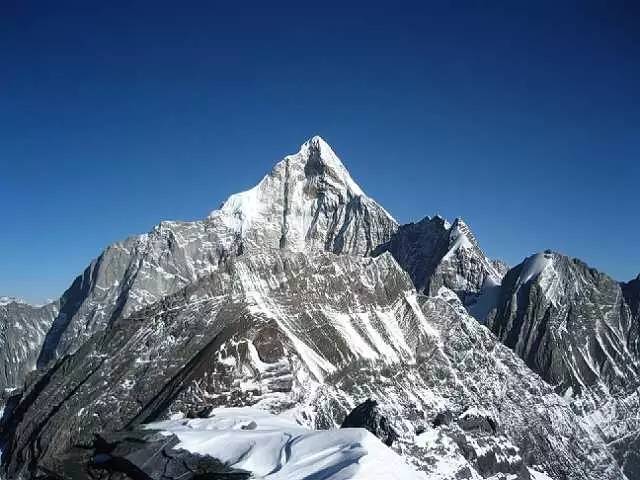
24. The Eye of the Yellow Dragon——Wucaichi
Huanglong is located at the southern foot of the Minshan Mountains in Songpan County, Aba Prefecture, Sichuan Province, 450 kilometers away from Chengdu and 120 kilometers away from Jiuzhaigou. Wucai Pool is a group of calcified color pools located at the top of Huanglong, with a total of 693 calcium pools and a distance of 4166 meters from the entrance.
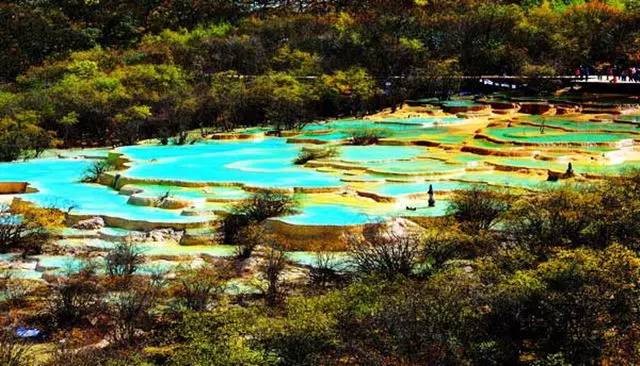
The colorful pools are like multicolored pearls inlaid in the virgin forest, and are known as “the wonderland on earth”.
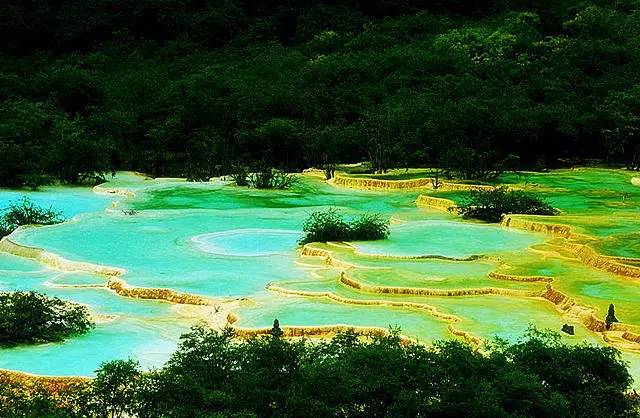
25. Jiuzhai Yaochi – Wuhuahai
Jiuzhaigou Wuhuahai is located in the center of Jiuzhaigou tourist attraction in Aba Tibetan and Qiang Autonomous Prefecture, Sichuan Province. It is the pride of Jiuzhaigou, known as “Jiuzhaigou’s unique” and “Jiuzhai’s quintessence”.
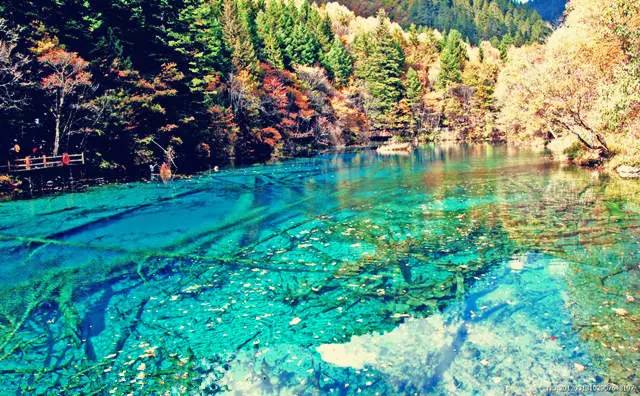
The hillsides around Wuhuahai are shrouded in gorgeous autumn colors in autumn, with rich colors and various postures. The colorful forests on the lakeside are reflected on the lake surface, mixing with the colors at the bottom of the lake to form a colorful world.
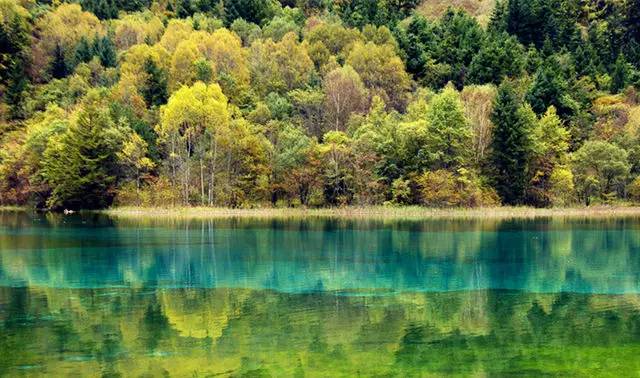
In the same water area, Wuhuahai can show light yellow, dark green, dark blue, navy blue and other colors, mottled and blurred, and colorful. It is one of the most exciting scenic spots in Jiuzhaigou, attracting countless tourists and photographers.
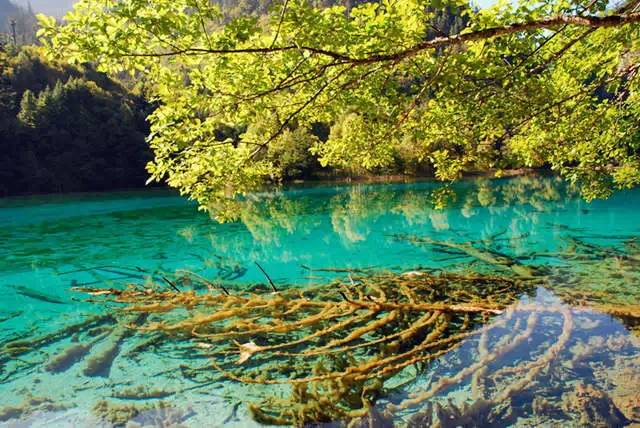
26. Ancient and Fortified Villages – Xisuo Residential Houses
Today’s Xisuo dwellings were called Zhuokeji Ganqiangba (meaning Zhuokeji Street) in the historical period of Tusi. The dwellings have unique characteristics of Jiarong Tibetans and maintain the traditional architectural style of Jiarong ancestors’ “building stones as houses”. .
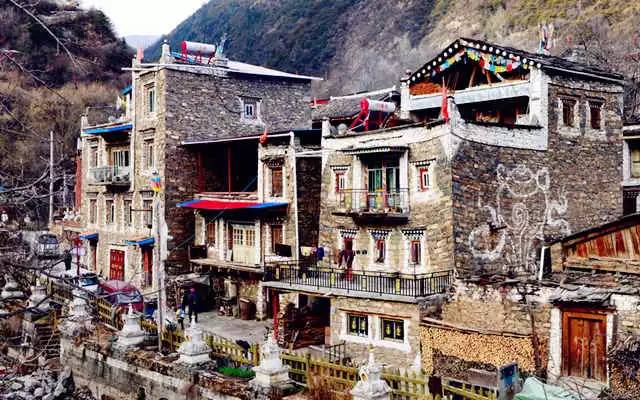
The stockades are row upon row and well arranged, looking like an ancient castle with fortified walls from a distance.
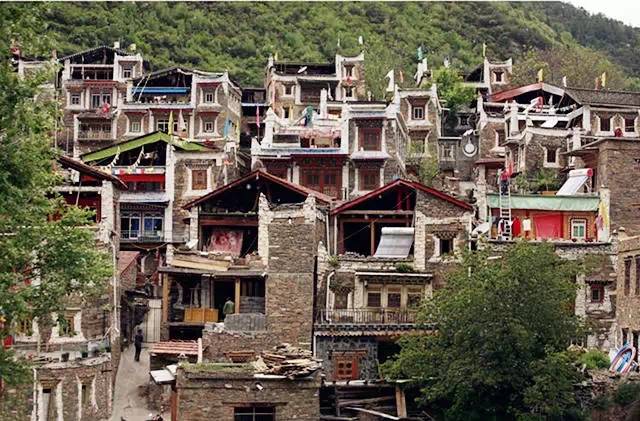
27. Guardian of the Holy Mountain——Xuebaoding
Xuebaoding, located in the southern section of Minshan Mountain extending from north to south, is the highest peak of Minshan Mountain. It is located in Songpan County, Aba Tibetan Autonomous Prefecture. Xuebaoding, the main peak of Minshan Mountain, is one of the seven sacred mountains of the Benbo Sect in the Tibetan area.
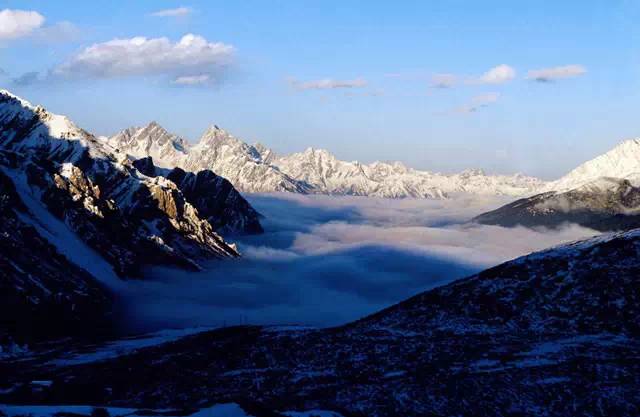
The main peak of Baoding is surrounded by many peaks. The four peaks of Weifeng, Yuzan, Sigenxiang and Xiaoxuebaoding have different expressions. Due to the cutting of glaciers on the west side, exposed rock ridges have been formed, and the northwest of the mountain is mostly exposed rocks and cliffs.
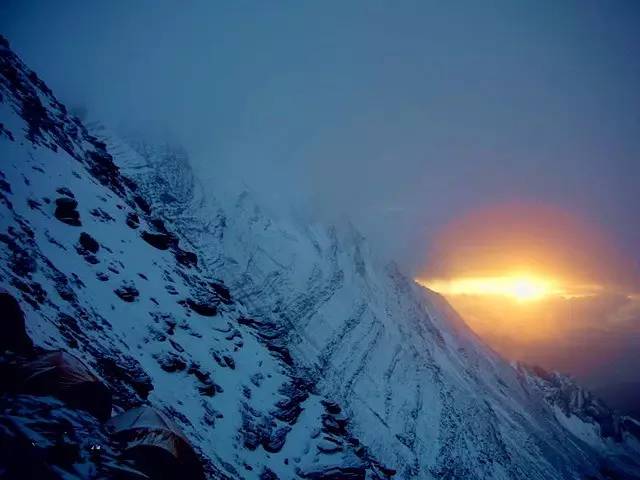
Xuebaoding is also a sacred mountain revered by Tibetans. Every June 15th and June 25th is the pilgrimage period, and countless Tibetan, Qiang, and Han people go to worship.
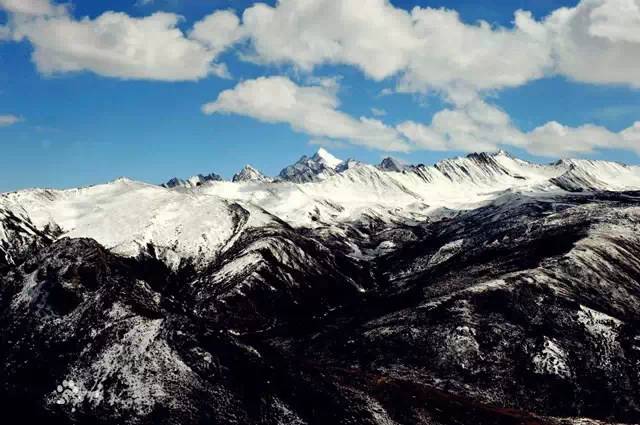
28. The heart of Hongyuan Prairie – Moon Bay
Yueliangwan Grassland is located in Hongyuan County, Sichuan. Its wide grassland and lush grass are rare in the whole Qinghai-Tibet Plateau. It is only 3 kilometers away from Hongyuan County.
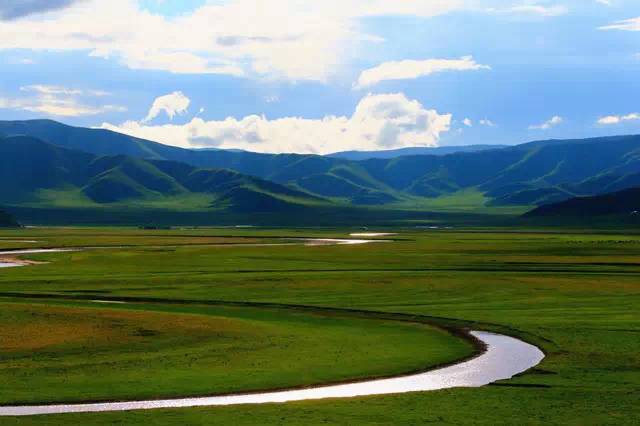
The beauty of Hongyuan Grassland is fully displayed in Moon Bay. On an open grassland, the Baihe River meanders in an “S” shape, like a crescent moon in the sky, hence the name “Moon Bay”.
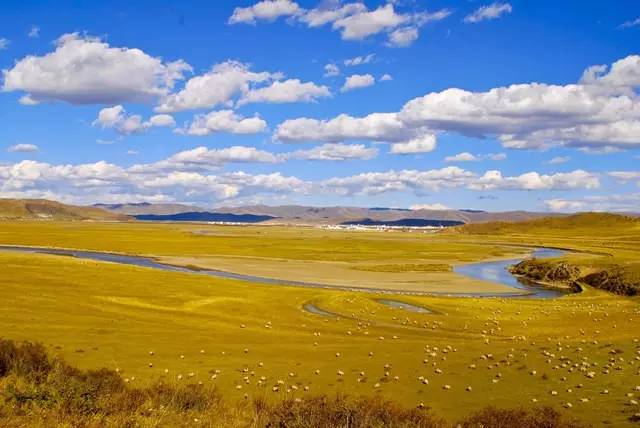
At dusk, the grass is green nearby, and the mountains are stacked in the distance. The setting sun dyes the sky and the winding water red. The horses standing by the river are eating the grass leisurely, wagging their tails, making the grassland Even more quiet.
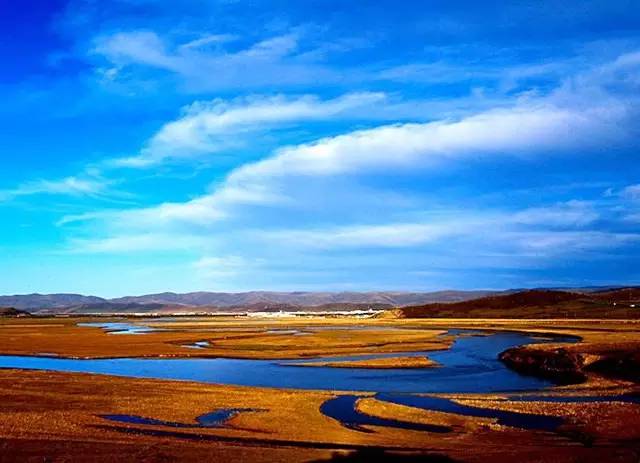
-end-
Attached. Recommended western Sichuan itinerary:
D1: Chengdu – Ya’an – Luding Bridge – Hailuogou
D2: Hailuogou – Hongshitan – Kangding – Xindu Bridge
D3: Xindu Bridge – Litang – Daocheng – Shangri-La
D4: One-day tour of Aden
D5: Shangri-La – Litang – Xindu Bridge
D6: Xinduqiao – Luhuo – Seda
D7: Seda – Guanyin Bridge
D8: Guanyin Bridge – Maerkang – Wenchuan – Chengdu




